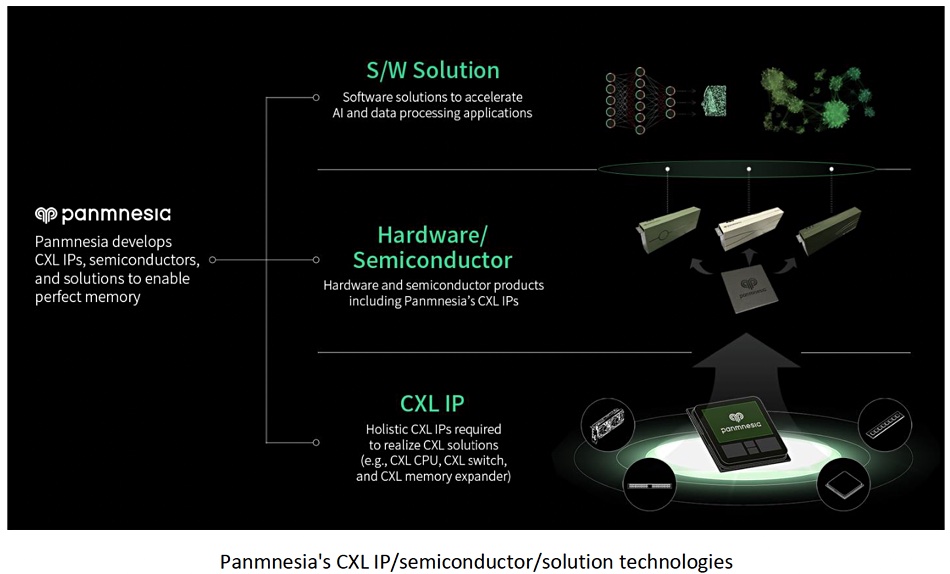Cigent Technology, which supplies zero trust data protection, is partnering with encrypted storage drive supplier Kanguru to bring full disk encryption to global customers. Kanguru Defender SED300 Secure SSDs, powered by Cigent, have security capabilities built into the firmware to ensure only authorized users and processes have access to data. Kanguru drives are AES 256 Self-Encrypting Drives, FIPS 140-2 Level 2 validated, come in internal PCIe M.2 2280 NVMe and external USB storage, and are available in 512GB, 1TB, and 2TB capacities.
Kanguru Secure SSDs are Cigent Ready, enabling the advanced security storage level features to be invoked and managed with the Kanguru Data Defense software. Data Defense enables the firmware features and also provides:
- Full drive encryption with pre-boot authentication
- Automated FIPS-mode configuration
- Secure Vaults, protected partitions that are invisible until unlocked
- Zero Trust File Access to ensure only trusted users and processes have access to protected files.
…
Continuity is an official Dell Technologies partner, helping to secure the storage and data protection systems of Dell customers who get:
- Visibility of all security misconfigurations and vulnerabilities in your storage and backups
- Remediation guidelines & commands for all these security risks
- Continuous hardening of your storage & backups, to withstand cyberattacks
- Compliance reports to prove adherence with security regulations & standards (e.g. NIST, ISO, CIS, etc.)
More information here.
…
Digital in-memory compute chip startup d-Matrix has raised $110 million in a B-round led by Singapore-based Temasek, with other investors including Playground Global and Microsoft. The previous funding round raised $44 million. The company also announced Jayhawk II, the next generation of its silicon-based generative AI compute platform, which features an enhanced version of its digital in-memory-compute (DIMC) engine with chiplet interconnect. This industry-first silicon demonstrates a DIMC architecture coupled with the OCP Bunch of Wires (BoW) PHY interconnect standard for low-latency AI inference on LLMs from ChatGPT to more focused models like Meta’s Llama2 or Falcon from the Technology Innovation Institute. Jayhawk II is now available for demos and evaluation. Learn more here.
…
Postgres accelerator EDB is making Trusted Postgres Architect (TPA) available as an open source tool accessible to all PostgreSQL users. This deployment automation and configuration management tool streamlines the setup of High Availability (HA) Postgres clusters, helping enterprises deploy robust, production-ready clusters while saving time and reducing the chance of errors.
…
Wells Fargo analyst Aaron Rakers noted after attending an HPE investors’ session that, in terms of retention rates, the company is seeing a GreenLake churn rate in the ~5 percent area (95 percent retention), which is meaningfully lower than traditional compute refresh churn rates in the 30-40 percent range. Standard HPE GreenLake customers sign up for fixed capacity/consumption usage with flexibility around these thresholds; HPE GreenLake pricing is somewhat dictated around these consumption plans/flexibility.
…
Micron has become a Nutanix customer, using its offering for its global manufacturing facilities.
…
Israeli SQL query acceleration startup NeuroBlade, which produces Xiphos SPU (SQL Processing Unit) hardware using XRAM processing-in-memory technology, is working with Meta’s Velox open source software optimization to speed SQL queries. Velox can achieve a 3x speedup on its own and NeuroBlade claims an up to 10x acceleration. Pedro Pedreira, software engineer and Velox lead at Meta, stated: “We have created Velox to unify software-based optimizations into a single execution engine that can be reused across engines such as Presto, Apache Spark, and beyond. Our long-term strategy for Velox, however, is to provide a unified framework that allows hardware accelerators to be seamlessly integrated into data management.” NeuroBlade’s SPU architecture offloads the CPU by executing many sub-query operations more efficiently and doing the data reduction close to storage. Velox APIs allow arbitrary parts of query execution to be offloaded to an accelerator. The implementation later this year will be accompanied by a white paper describing the methodology, benchmark techniques, and outcomes.
…
Korea startup Panmnesia has raised a $12.5 million seed funding round with a valuation exceeding $81.4 million for its fabless CXL product development. The round was led by Daekyo Investment, with contributions from SL Investment, Smilegate Investment, GNTech Venture Capital, Time Works Investment, Yuanta Investment, and Quantum Ventures Korea. Panmnesia presented the world’s first CXL 2.0-based full-system memory pooling framework at the USENIX ATC conference in Boston last year.

It unveiled a system this May that accelerates datacenter-oriented AI applications using CXL 3.0 technology. At the Flash Memory Summit 2023 in Santa Clara, Panmnesia disclosed a full system, from devices to operating systems, connected through a multi-level switch architecture supporting CXL 3.0. It will refine its CXL semiconductor technology and develop additional offerings to speed up AI applications and massive parallel data processing through CXL.
…
Prague-based post-production media studio PFX is a Qumulo customer, consolidating multiple locations and workflows onto the Qumulo File Data Platform. It uses the software for efficient management and real-time operational analytics, basing it on HPE ProLiant DL325 Gen10 Plus hardware. PFX is using Qumulo for its active storage, while Hitachi Vantara’s HNAS covers NAS storage without performance needs, and the backup area.
…
Seagate announced the Exos CORVAULT 5U84 at the International Broadcasting Convention (IBC) 2023. Previously available in a standard 4U form factor for large 1.2m-deep racks, Seagate now offers a 5U form factor for smaller 1m-deep racks, commonly leveraged in media companies. Ben Leaver, CEO and co-founder of pixitmedia, stated: “We are delighted to combine the new Corvault 5U84 with our pixstor software defined storage solution to create high performance, scalable, and flexible data storage with best-in-class TCO that is purpose-built to meet rigorous media workflow demands.”
…
China-based SmartX has announced an upgraded hyperconverged infrastructure portfolio, SmartX HCI 5.1, which supports virtual machines and containers. It features:
- New virtualization features: GPU passthrough, vGPU, DRS, USB passthrough, PCI passthrough, and Virtual NIC QoS.
- Enhanced storage performance through features like large page memory allocation, CPU binding, storage concurrent access mechanism, and I/O logic optimization. The three-node configuration achieves a remarkable 1.38 million IOPS for 4K random read.
- “Network Visualization” feature to display VM data flows and security policy enforcement results.
- Software-defined network load balancer to improve application performance and security.
- A more comprehensive data protection and disaster recovery solution: upgraded backup, replication, and recovery functionalities.
- Wider CPU and GPU compatibility.
- Supports a broader range of migration sources (from virtualization/HCI, bare metal, mainstream public clouds, and OpenStack private clouds, to SmartX) with SMTX CloudMove.
…
Cloud data warehouse and analytics supplier Snowflake has published its Modern Marketing Data Stack 2023 report. Key findings include:
- Customer adoption of AI and machine learning usage is up to 15.5 percent among marketing teams as marketers begin to explore the potential impact of large language models and generative AI in their work.
- There are typically six technology categories organizations consider when building their marketing data stacks: analytics, integration & modelling, identity & enrichment, activation & measurement, business intelligence, and data science & AI.
Data intelligence platform Similarweb has been recognized as a Data Enrichment leader in the report. Access the full report here.
…
Ulink noticed that long latency read data was given high importance scores by algorithms during the training of its own machine learning algorithms for Ulink DA Drive Analyzer to predict the remaining useful life of drives. This meant the algorithms determined that long latency read data was useful in predicting drives’ remaining useful life. The data used to rank drive models was SATA HDD health data collected from NAS users in May 2023.
Whenever your system sends a request to read data from your drive, it keeps track of the amount of time that the drive is taking to return that information to the system. For HDDs, the criterion for incrementing long latency read count is typically when a read command takes longer than 1,000ms + (the number of sectors being read / 256)*2ms.
Long latency reads on an HDD are usually caused by excess read retries, typically due to one of two reasons: bad sectors, and badly written data. Bad sectors, or damaged disk media, can be caused by manufacturing defects, or after the manufacturing process by loose particles or head crashes. Data may be badly written if the write was weak, written off-track, or overwritten by data belonging to an adjacent track, which may be caused by vibration. These two reasons usually cause the drive to retry the read several times, possibly with slightly altered head positions or electrical strength. And because each retry requires the platter to make another rotation, the read may require several rotations, and thus a longer time, to succeed.
…
Dr Joye Purser, field chief information security officer at Veritas, has received the ISC2 Harold F. Tipton Lifetime Achievement Award, the highest tribute in cybersecurity. In her current role at Veritas, Purser is responsible for the company’s cybersecurity field strategy and vision. Prior to Veritas, Purser founded East by South Solutions, a consultancy aimed at helping clients address regulatory compliance risk and increase cyber resiliency. Before that, she served as regional director for cybersecurity at the US Department of Homeland Security and managing consultant at PricewaterhouseCoopers. She has also held leadership positions with the Pentagon, Artemis Strategies, and US Congress.
…
HPE’s Zerto business unit co-sponsored an ESG report that found “ransomware continues to pose a serious threat and is viewed today as one of the top concerns for viability within organizations.” No surprise there then. It stated companies are becoming increasingly aware of the damage caused by these attacks and are understanding the reality of potential compromise. The research indicates that nearly two-thirds (65 percent) of respondents consider ransomware to be one of the top three most serious threats to the viability of the organization. The findings are published in an e-book titled “2023 Ransomware Preparedness: Lighting the Way to Readiness and Mitigation.” Download the e-book here.








